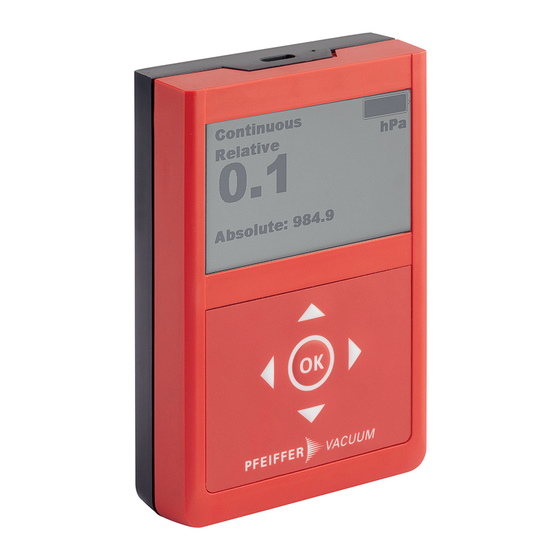
Pfeiffer Vacuum TPG 202 NEO Manuals
Manuals and User Guides for Pfeiffer Vacuum TPG 202 NEO. We have 2 Pfeiffer Vacuum TPG 202 NEO manuals available for free PDF download: Operating Instructions Manual
Pfeiffer Vacuum TPG 202 NEO Operating Instructions Manual (108 pages)
Piezo/Pirani handheld measurement instrument
Brand: Pfeiffer Vacuum
|
Category: Measuring Instruments
|
Size: 5 MB
Table of Contents
Advertisement
Pfeiffer Vacuum TPG 202 NEO Operating Instructions Manual (56 pages)
Piezo/Pirani handheld measurement instrument
Brand: Pfeiffer Vacuum
|
Category: Measuring Instruments
|
Size: 4 MB

